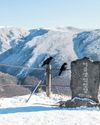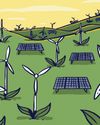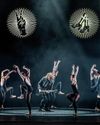
When Annette Kicken's late husband, Rudolf, founded a photo gallery in Aachen, West Germany, in 1974, appreciation of photography as an art form was rare. Major German photographic museums were years away from opening. In the UK, the National Portrait Gallery had only just appointed its first curator of photography. In the US, the Metropolitan Museum of Art would not establish a department of photographs until 1992.
"It was a very, very small scene," says Kicken, who joined the gallery in 1999. "There were few institutional exhibitions. There was no market."
Kicken Gallery, which moved from Aachen to Cologne in 1979, and to Berlin in 1999, set out to preserve photography. Quick to participate in fairs such as Art Basel and proactive in its cooperation with museums, the gallery helped to build recognition for the photography of surrealism, Czech modernism and the Bauhaus, as well as American new colour photography and artistic documentary movements in both East and West Germany.
The current 50 Years | 50 Photographs at Kicken Berlin reflects on the gallery's legacy, and the gradual acceptance of photography as a means of artistic expression. The exhibition is curated by Wilhelm Schürmann, a photographer and cofounder of the gallery.
This story is from the {{IssueName}} edition of {{MagazineName}}.
Start your 7-day Magzter GOLD free trial to access thousands of curated premium stories, and 9,000+ magazines and newspapers.
Already a subscriber ? Sign In
This story is from the {{IssueName}} edition of {{MagazineName}}.
Start your 7-day Magzter GOLD free trial to access thousands of curated premium stories, and 9,000+ magazines and newspapers.
Already a subscriber? Sign In

Bring it on home Led Zep's first biopic
How were the famously interview-shy rock gods persuaded to take part in a film about their early success with the band telling their own story?

Dead souls
The Nobel laureate bears witness to Korea's traumatic past as one woman's quest is told through haunting, harrowing imagery
Object lesson
An expat couple curate their lives by plants anc Radiohead LPs in this deliciously pessimistic chronicle of Berlin life

Legacy of violence
A seething and erudite-but flawedindictment of the west's role in the creation of Israel and everything that has flowed from it

The right are wrong on climate-why is the UK following their lead?
If you care about the world we are handing on to future generations, the news last Thursday morning was dramatic.

Power pointe
Ballet has always been more than just a job for Carlos Acosta. And as director of Birmingham Royal Ballet, he is trying to make it bigger than ever
Borders can't contain the devastating, destabilising crisis engulfing Sudan
As Sudan approaches its third year of civil war, the dynamics are shifting.

Heroes to villains
With 13 Oscar nominations, Emilia Pérez's cast and crew should have been flying high. Then came a social media scandal and a fearsome backlash

Bukele's rise Strongman who became the darling of the right
Five hours after being shot in the belly, a Haitian accountant sat in a Port-au-Prince emergency room pondering how his homeland might be saved.

Trump is fuelling lethal fantasies of driving people from their land
The shock and awe continues and it only gets more shocking and more awful.